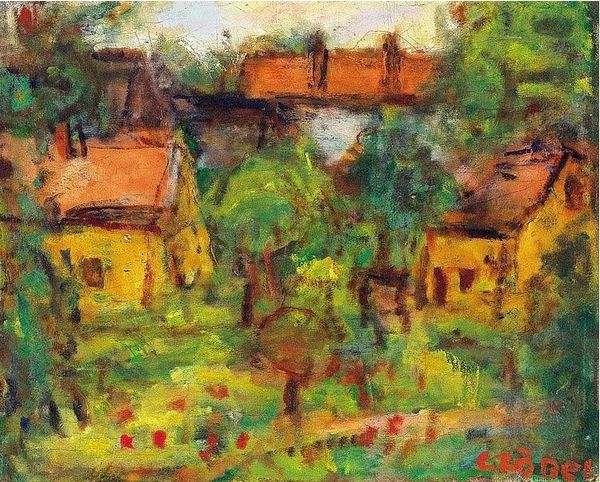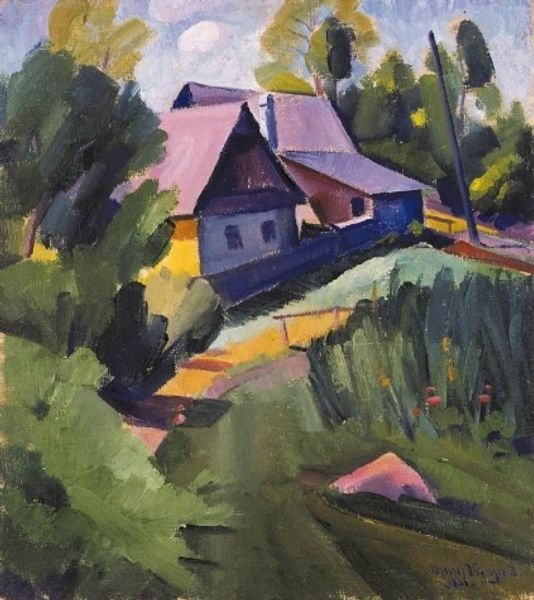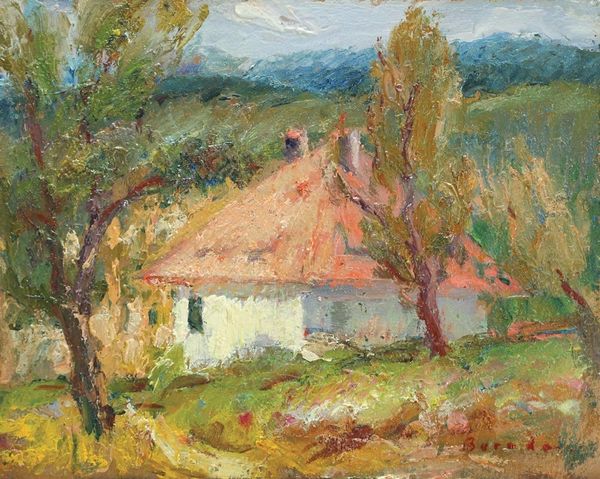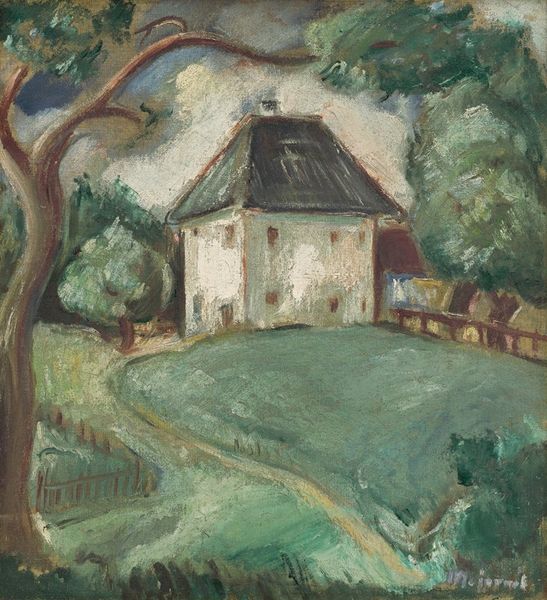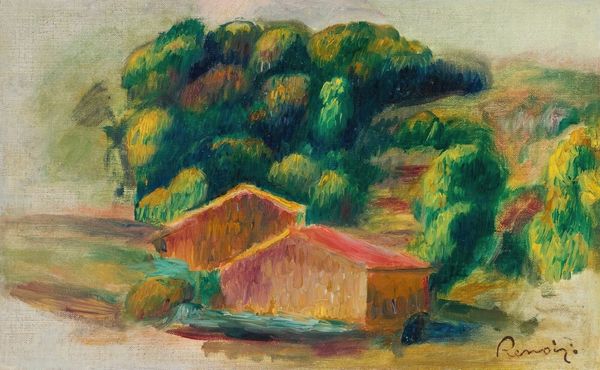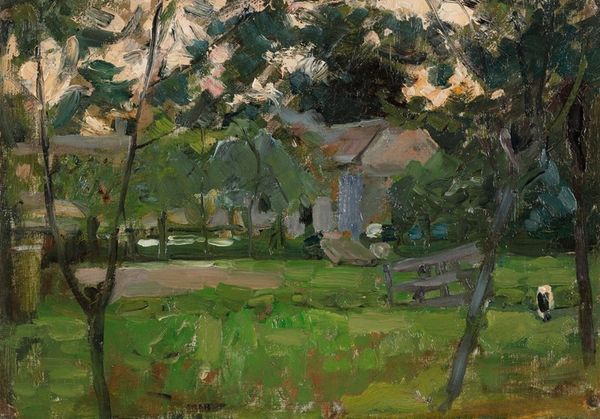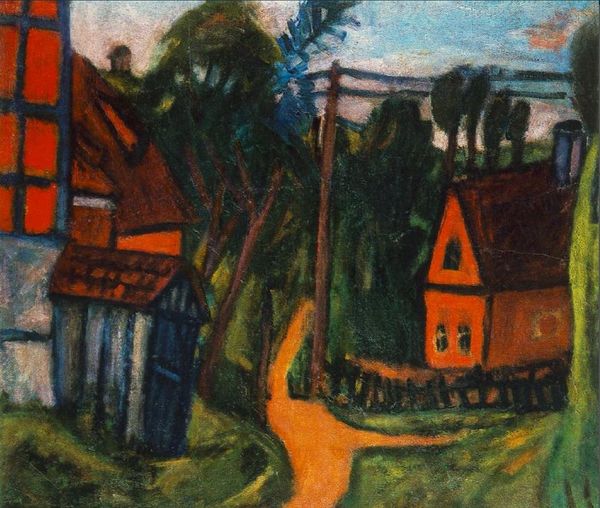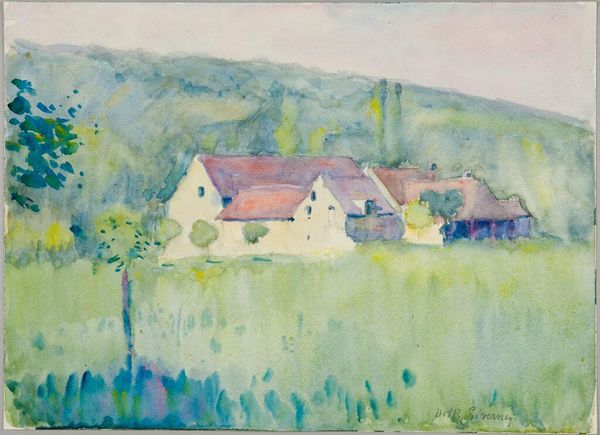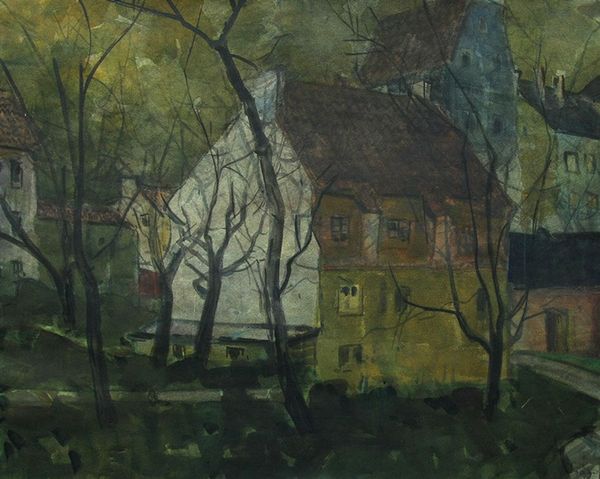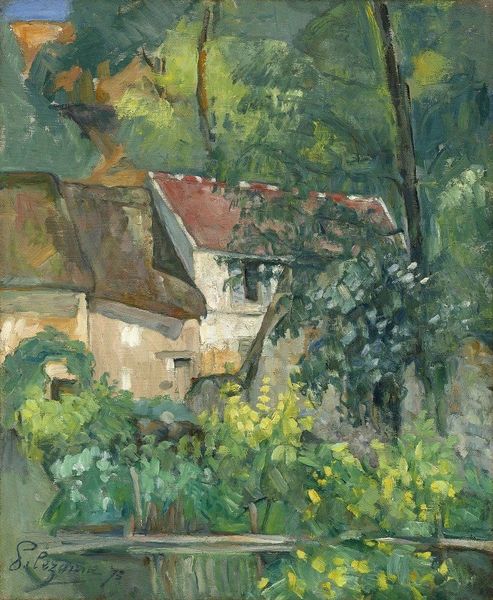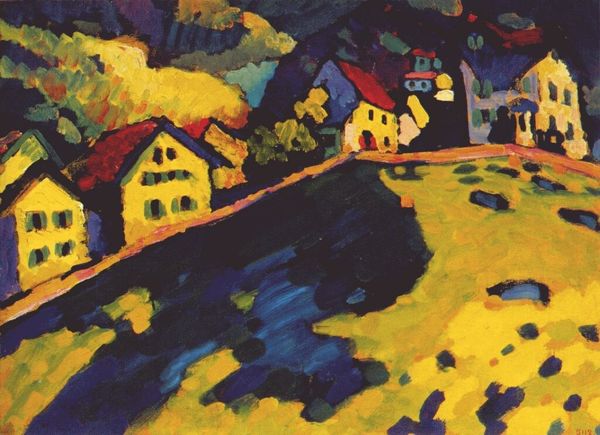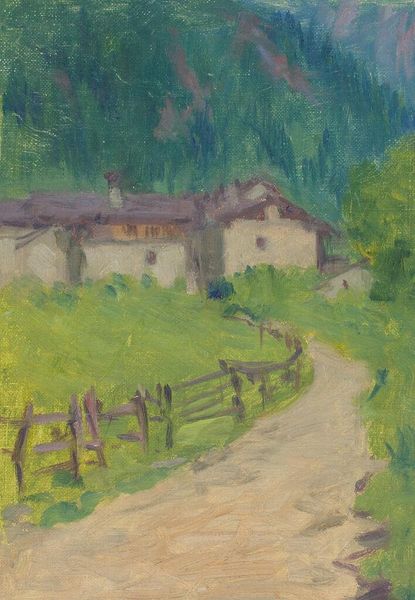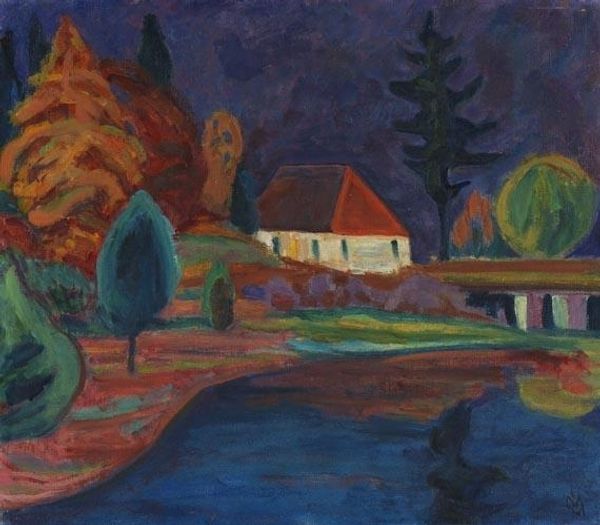
Copyright: Public domain
Editor: This is Vasile Popescu's "Houses in Prahova Valley," an oil painting from 1942. There's something almost claustrophobic about how the houses are nestled within all that dense greenery. What stands out to you? Curator: It's intriguing to consider the conditions under which Popescu made this work. Oil paint, a product of industrial processes, used to depict rural homes during wartime Romania… What was the availability of materials like? How did the societal pressures and limited resources affect his artistic choices? Editor: So, you're thinking about how the limitations shaped his work? Curator: Precisely. The impasto style, the visible brushstrokes – were those choices driven by aesthetic preference, or by a scarcity of pigment, forcing him to be more expressive with less? It urges us to consider how war touches everything. Editor: That's a different angle than I expected! I was focused on the aesthetic choices. Curator: The aesthetics are certainly present, but to fully appreciate a work, shouldn't we delve into its production? These houses, rendered with such immediacy, suggest a personal connection. Was he documenting a vanishing way of life due to the march of industry or perhaps reflecting the impact of political turbulence on a community he knew? Editor: So, it’s about the interaction between his artistic choices, his available tools, and his world. Curator: Exactly. Consider the labor involved – from the extraction of raw materials for the paint to the physical act of applying it to canvas. Each step embodies social and economic relationships. What initially looks like a serene landscape reveals a network of connections. Editor: I see it now. It makes me want to dig deeper into what paints and brushes were available then! Thank you. Curator: And perhaps that’s the point. To view the surface, while being acutely aware of the support system that enables that surface to exist.
Comments
No comments
Be the first to comment and join the conversation on the ultimate creative platform.
